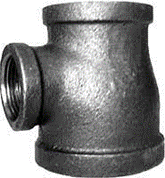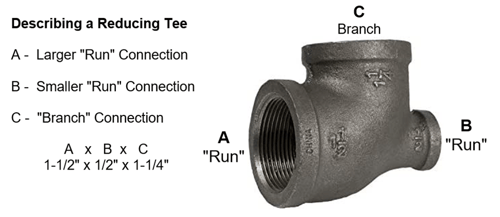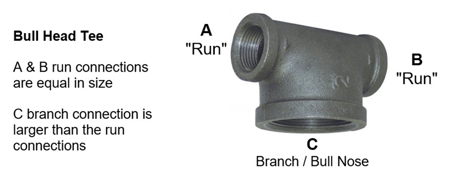How to Describe a Reducing Tee
 How to Describe a Reducing Tee
How to Describe a Reducing Tee
Reducing tees are always described in the same way regardless of what material they are made from. To accurately describe a reducing tee, you first identify the largest run size connection of the tee, as shown below (A = 1-1/2"). Next, indicate the run size connection opposite to the largest run size connection (B = 1/2"). The third and final size in a reducing tee description is always the branch side (C = 1-1/4"). The tee in the example is described as a 1-1/2” x 1/2" x 1-1/4” reducing tee.

Additional Resources
What is a Bull Head Tee?
https://support.boshart.com/what-is-a-bullhead-tee

